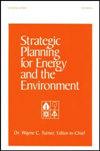Based on the Numerical Simulation Analysis of the Impact of Coal Mining in the Land Conservation Area
Q3 Environmental Science
Strategic Planning for Energy and the Environment
Pub Date : 2023-05-17
DOI:10.13052/spee1048-5236.4236
引用次数: 0
Abstract
As China pays more attention to the protection of water resources, there are overlapping areas between the planned reservoir conservation area and planned coal mine field. In the coal mining process, a water-conducting fracture zone is formed after the roof of the goaf is damaged, and cracks also generated on the surface of the mining area. In order to study the effect of coal mining on the recharge of surface water into the reservoir in the land conservation area, FLAC3D and Visual MODFLOW are used to simulate the development law of water-conducting fracture zone and surface subsidence cracks in the roof of the coal seam after coal mining in the land conservation area of the reservoir. Prediction and analysis on the change of the reservoir recharge capacity after coal mining in the land reserve are conducted. The results show that the maximum growth height of the water-conducting fracture zone in the overlying strata of the goaf after coal mining in the secondary land conservation area of the reservoir is not connected with the surface subsidence fracture. However, coal mining induces partial aquifer drainage in the roof of the coal seam, increasing the amount of surface water flowing to groundwater. Therefore, the maximum drop in the water level of the reservoir is 0.19 m, and the maximum recharge of the reservoir is 52,900 m33/a, accounting for 0.89% of the total recharge. It demonstrates that coal mining in the secondary land conservation area has little effect on the recharge of the reservoir. On the basis of good ecological compensation, water saving and comprehensive utilization of mine water, coal mines need to further carry out research on mitigating the adverse effects of coal mining on the reservoir’s land conservation area.基于数值模拟的土地保护区内煤矿开采影响分析
由于中国更加重视水资源保护,规划的水库保护区和规划的煤矿区之间存在重叠区域。在煤炭开采过程中,采空区顶板破坏后形成导水断裂带,矿区表面也产生裂缝。为了研究煤矿开采对土地保护区地表水向水库补给的影响,利用FLAC3D和Visual MODFLOW模拟了水库土地保护区煤矿开采后煤层顶板导水断裂带和地表塌陷裂缝的发育规律。对该土地储备区煤炭开采后水库补给能力的变化进行了预测分析。结果表明,在水库二级土地保护区采煤后采空区上覆层导水裂隙带的最大生长高度与地表沉降裂隙无关。然而,煤矿开采导致煤层顶板部分含水层排水,增加了流入地下水的地表水量。因此,水库水位最大落差0.19m,水库最大回灌量5.29万m3/a,占总回灌量的0.89%。结果表明,在二级土地保护区开采煤炭对水库补给影响不大。煤矿需要在做好生态补偿、节水和矿井水综合利用的基础上,进一步开展减轻煤矿开采对水库土地保护区不利影响的研究。
本文章由计算机程序翻译,如有差异,请以英文原文为准。
求助全文
约1分钟内获得全文
求助全文
来源期刊

Strategic Planning for Energy and the Environment
Environmental Science-Environmental Science (all)
CiteScore
1.50
自引率
0.00%
发文量
25
 求助内容:
求助内容: 应助结果提醒方式:
应助结果提醒方式:


